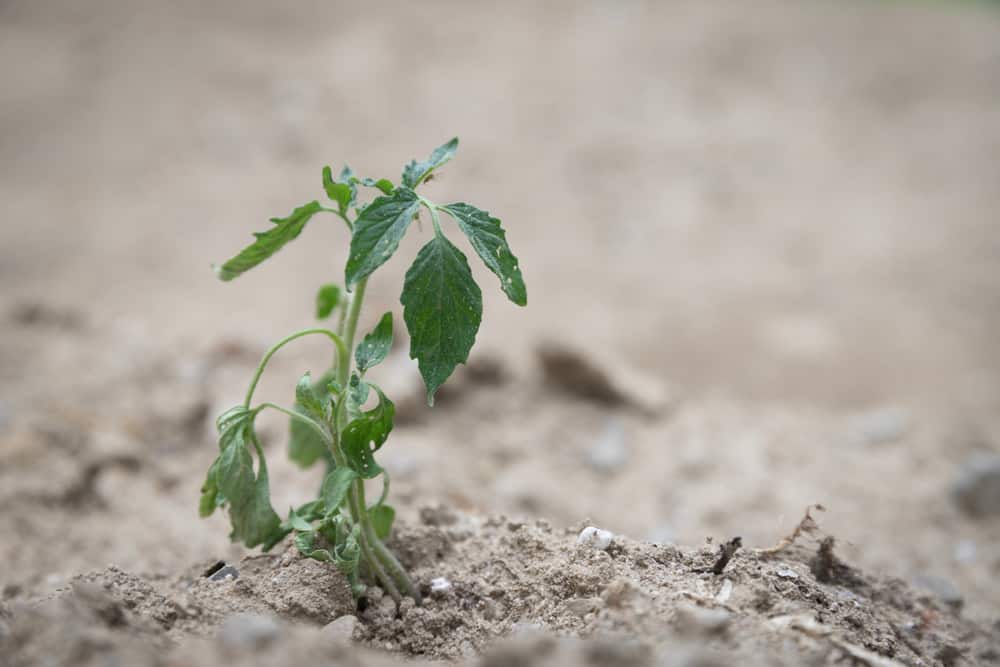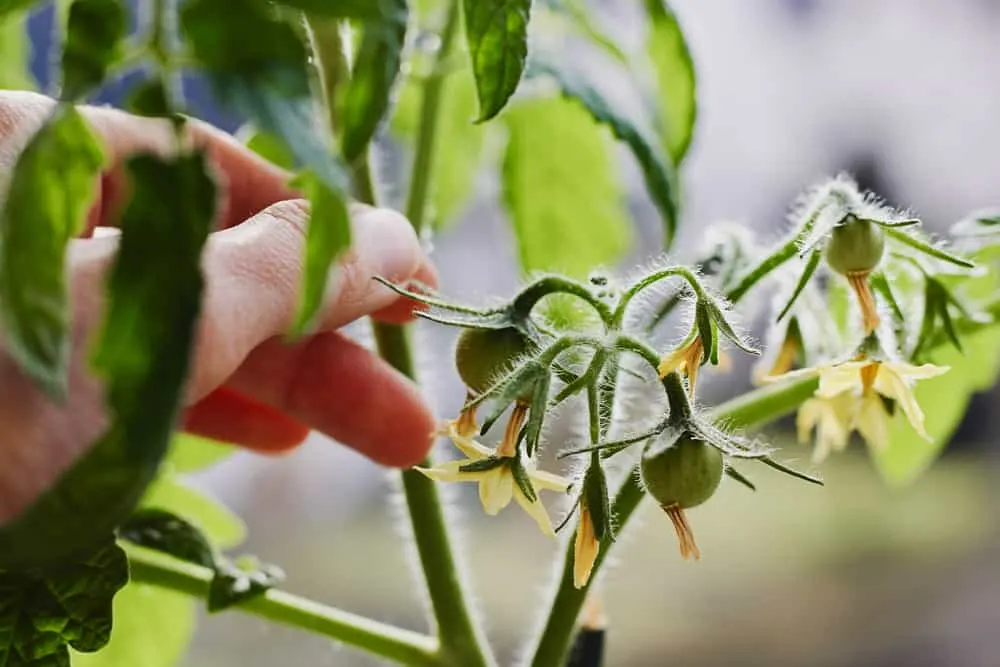Wondering why your tomato plants have no flowers? Discover the top reasons tomatoes don’t bloom and how to fix temperature stress, excess nitrogen, and humidity issues for better fruiting.
When Your Tomato Plant Grows But Doesn’t Bloom
There’s nothing more frustrating for a gardener than watching a lush, green tomato plant grow strong and produce zero flowers. No flowers means no fruit. And for many home gardeners across Canada, especially here in Vancouver, this is a surprisingly common problem.
At DH Garden Centre, we’ve helped hundreds of gardeners troubleshoot this issue. Whether you’re growing tomatoes in the ground, in raised beds, or on a sunny patio, this blog will guide you through the top 3 causes of tomato flowering failure and how to fix each one effectively.
Because with the right conditions, your tomato plants want to flower — and when they do, it’s only a matter of time before you start harvesting juicy, homegrown tomatoes.

Because with the right conditions, your tomato plants want to flower — and when they do, it’s only a matter of time before you start harvesting juicy, homegrown tomatoes.
When Should Tomato Plants Start Flowering?
In general, tomato plants begin producing flower buds 4 to 6 weeks after being transplanted outdoors. If your plant is younger than this, or just recovering from transplant shock, you may simply need to wait.
Here are some key points to consider:
-
Tomatoes are self-fertile: Each flower contains both male and female parts, so you don’t need two plants for fruiting.
-
Indeterminate vs. determinate: Indeterminate varieties flower and fruit continuously. Determinate ones flower more uniformly and all at once.
-
Flowering varies by variety: Heirlooms may take longer than hybrids. Cherry tomatoes typically bloom earlier than beefsteak types.
If your tomato plant has passed the 6-week mark and still hasn’t flowered — or is dropping flowers before fruiting — it’s time to look deeper.

In general, tomato plants begin producing flower buds 4 to 6 weeks after being transplanted outdoors.
1. Temperature Stress: Too Hot or Too Cold
Tomatoes are heat-loving plants, but extreme temperatures on either end of the spectrum can disrupt flowering or cause flowers to drop prematurely.
Optimal Temperature Range
-
Daytime: 21–29°C (70–85°F)
-
Nighttime: 13–21°C (55–70°F)
High Heat Issues
When daytime temperatures exceed 30°C (86°F) consistently, or nighttime temps stay above 21°C (70°F), tomato plants may:
-
Stop producing new flowers
-
Drop existing flowers
-
Delay fruit development
This is the plant’s way of conserving energy and protecting itself from stress.
Low Temperature Issues
If nighttime temps frequently fall below 13°C (55°F), especially in spring or early summer, tomato plants may:
-
Delay flowering
-
Produce weak or sterile flowers
-
Fail to set fruit even with blooms
Solutions for Temperature Stress
-
Use shade cloth: On extremely hot days, cover tomato plants with breathable shade fabric to reduce stress.
-
Mulch deeply: This stabilizes soil temperature and moisture.
-
Plant at the right time: In Vancouver, transplant tomatoes in late May or early June, after danger of frost has passed.
-
Use cloches or row covers: Early in the season, protect young plants from cold nights.

Tomatoes are heat-loving plants, but extreme temperatures on either end of the spectrum can disrupt flowering or cause flowers to drop prematurely.
2. Nitrogen Overload: Too Much Green, Not Enough Flowers
Many beginner gardeners unintentionally sabotage their tomato plants by over-fertilizing with high-nitrogen formulas. Nitrogen promotes leafy, vegetative growth — but too much can delay or prevent flowering.
Symptoms of Nitrogen Overload
-
Dark green, thick foliage
-
Excessive height and stem elongation
-
Few or no flower buds
-
Delayed fruiting
The plant is stuck in “growth mode” and resists switching to its reproductive phase.
Understanding Tomato Nutrition
Tomatoes need different nutrients at different stages:
-
Early growth: Nitrogen helps build stems and leaves
-
Pre-bloom and bloom stage: Plants shift to using more phosphorus and potassium for flower and fruit production
Too much nitrogen keeps them from making this natural shift.
How to Fix It
-
Switch to a balanced fertilizer: Choose a tomato-specific blend like 4-6-8 or 5-10-10.
-
Avoid all-purpose fertilizers like 20-20-20, especially in mid to late season.
-
Amend soil with compost rather than synthetic nitrogen boosts.
-
Get a soil test if growing in-ground. It’s inexpensive and reveals exactly what your plants need — and don’t need.
In containers, apply fertilizer every 2–3 weeks. In raised beds, side-dress with compost monthly.
3. Humidity Issues: Poor Pollination Conditions
Even if your tomato plant produces flowers, high or low humidity can interfere with pollination, which is necessary for those flowers to turn into fruit.
Ideal Humidity Range
-
40% to 70% relative humidity
Too Much Humidity (>70%)
-
Pollen becomes sticky and clumps inside the flower
-
It doesn’t fall onto the stigma for fertilization
-
Result: flowers dry up and drop
Too Little Humidity (<40%)
-
Pollen dries out and loses viability
-
Even with wind or bees, fertilization fails
-
Result: flowers drop without fruit set
Solutions for Humidity Control
-
Prune for airflow: Remove crowded foliage to allow wind and sunlight through the canopy.
-
Avoid overhead watering: Wet foliage increases humidity. Water at the base.
-
Group plants together: Creates a balanced microclimate and encourages pollinators.
-
Choose the right varieties: In high-humidity areas like coastal BC, look for heat/humidity-tolerant hybrids.
Choosing the Right Tomato Variety for Your Region
Sometimes the issue isn’t with how you’re growing — it’s what you’re growing.
Tomatoes vary widely in their adaptability. If your flowers keep failing year after year, try switching to a more climate-suited variety.
Tips for Variety Selection
-
Ask your neighbours: If they’re growing great tomatoes, ask what they planted!
-
Visit DH Garden Centre: We stock tomato varieties tested for Vancouver’s unique coastal climate.
-
Try cherry or saladette types: These tend to flower and set fruit more reliably, especially in unpredictable weather.
Some great local performers include:
-
‘Sungold’
-
‘Early Girl’
-
‘Mountain Magic’
-
‘Oregon Spring’
Troubleshooting Table: Why Your Tomatoes Aren’t Flowering
| Symptom | Likely Cause | Fix |
|---|---|---|
| No flowers at all | Temperature too hot/cold | Plant at optimal time, use covers/shade |
| Lush leaves, no buds | Too much nitrogen | Switch to low-nitrogen, higher phosphorus fertilizer |
| Flowers form, then drop | High or low humidity | Improve airflow, prune, group plants, plant climate-suited variety |
| Small plants, late blooms | Poor transplant timing | Start indoors early, harden off properly |
A Real-Life Garden Fix: From Leaves to Tomatoes
One of our regular customers, Sarah from Kitsilano, came in last June frustrated. Her tomato plants looked perfect — tall, green, and lush — but not a single flower.
She showed us photos, and we spotted the problem right away: too much nitrogen. She’d been using a general-purpose fertilizer every week.
We recommended:
-
Switching to a tomato-specific fertilizer
-
Skipping one feeding
-
Pruning some of the lower leaves for airflow
Within two weeks, buds began to appear. By mid-July, she had flowers and fruit on every plant.
Sometimes, just a small change makes all the difference.
Frequently Asked Questions
Q: My tomato has flowers, but no fruit. Why?
A: That’s usually a pollination issue. Try gently tapping the plant or using an electric toothbrush near the flowers to mimic bee vibration.
Q: How long after transplanting do tomatoes flower?
A: Typically 4 to 6 weeks. Some varieties may take longer.
Q: Can I still grow tomatoes in pots and get flowers?
A: Yes! Use a 5-gallon pot minimum, place in full sun, and fertilize with a balanced tomato food.
Q: Should I remove early flowers on young transplants?
A: Yes, if your plant is still small. Removing early buds helps the plant focus on root and foliage development first.
Call to Action: Let Us Help You Grow (and Bloom!)
At DH Garden Centre, we’re not just here to sell plants — we’re here to help you grow them successfully.
If your tomatoes aren’t flowering, bring in a photo or give us a call. We’ll help you troubleshoot and find the perfect variety, fertilizer, and setup for your garden — whether it’s a full backyard bed or a single patio pot.
📍 Visit us at 3742 West 10th Avenue, Vancouver
🛒 Shop online: dhgardencentre.com
📲 Message us anytime — we love solving plant mysteries with you!


